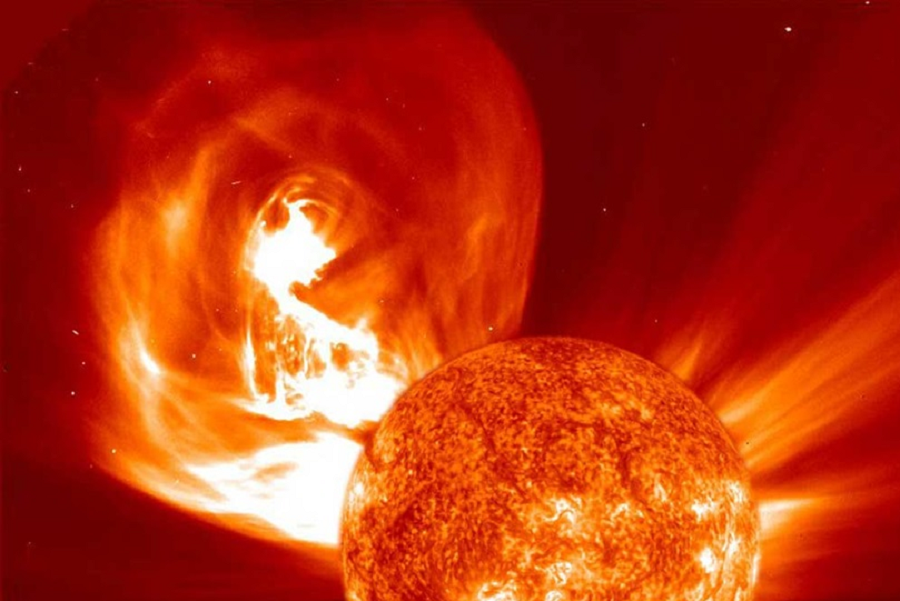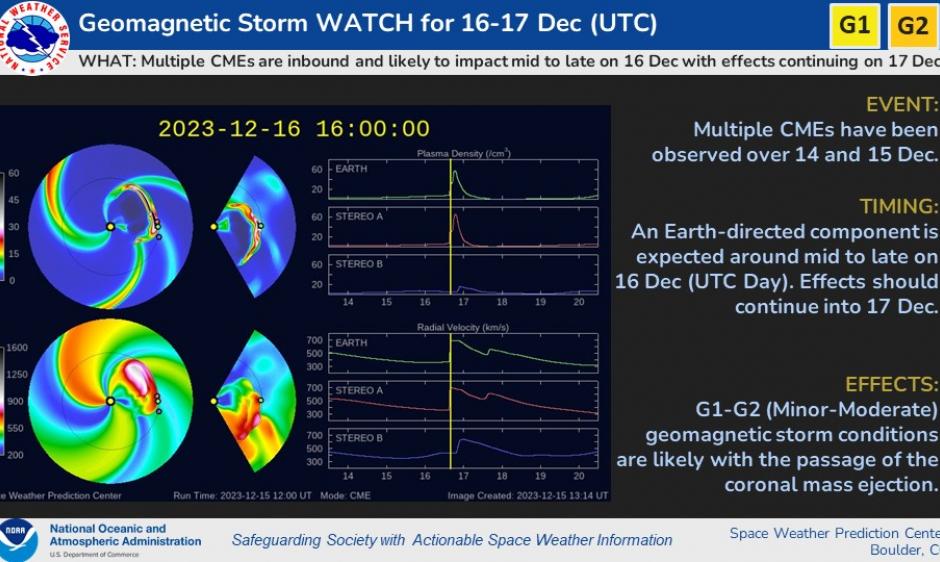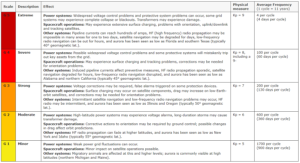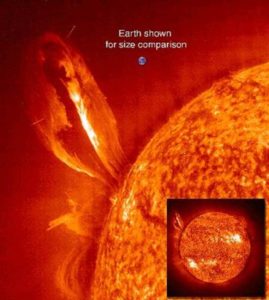
/ ESA / NASA
NOAA’s Space Weather Prediction Center (SWPC) has issued a Geomagnetic Storm Watch for Earth today as the planet continues to deal with the aftermath of an X-class solar flare that left the Sun on Wednesday. Multiple Coronal Mass Ejections (CMEs) associated with that flare are greating a geomagnetic disturbance on Earth today which could disrupt electrical generators and grids, communications and navigation systems, and even make the aurora appear in night skies further south than they usually do.
Solar flares are giant explosions on the sun that send energy, light and high speed particles into space. These flares are often associated with solar magnetic storms known as coronal mass ejections (CMEs). Flares are ranked on a classification system that divides solar flares according to their strength. The smallest ones are A-class (near background levels), followed by B, C, M and X. Similar to the Richter scale for earthquakes, each letter represents a 10-fold increase in energy output. So an X is ten times an M and 100 times a C. Within each letter class there is a finer scale from 1 to 9. C-class and smaller flares are too weak to noticeably affect Earth. M-class flares can cause brief radio blackouts at the poles and minor radiation storms that might endanger astronauts. According to NASA, although X is the last letter, there are flares more than 10 times the power of an X1, so X-class flares can go higher than 9. NASA says the most powerful flare measured with modern methods was in 2003, during the last solar maximum, and it was so powerful that it overloaded the sensors measuring it. Those sensors cut out at X28.
While the Earth felt impacts to radio communications moments after the X flare incident, it take several days for CME impacts to materialize in the form of geomagnetic storms on Earth. The first of these impacts arrived yesterday with more expected today.


Geomagnetic storms are rated on a 5 point scale with 1 being the mildest and 5 being the most potentially destructive. The sun has been extra-active in recent weeks, triggering 1,2, and 3-class geomagnetic storms. These storms have brought the aurora far south, disrupted radio and navigation systems, damaged or destroyed some satellites, and impacted electrical generation and grids at far northern latitudes.
NOAA forecasters analyze a variety of solar data from spacecraft to determine what impacts a geomagnetic storm could produce. If Earth is experiencing the effects of a coronal hole and a coronal mass ejection is forecasted to impact Earth, the combined effects could result in a more significant impact and more intense geomagnetic storming. Analyzing data from the DSCOVER and ACE satellite is one way forecasters can tell when the enhanced solar wind from a coronal hole is about to arrive at Earth. A few things they look for in the data to determine when the enhanced solar wind is arriving at Earth:
• Solar wind speed increases
• Temperature increases
• Particle density decreases
• Interplanetary magnetic field (IMF) strength increases
While these solar events can help illuminate the sky with stunning aurora, they can also do considerable harm to electronics, electrical grids, and satellite and radio communications.

One major CME event unfolded in 1859, which occurred on September 1-2 in 1859; it is also known as the “Carrington Event.” This event unfolded as powerful geomagnetic storm struck Earth during Solar Cycle 10. A CME hit the Earth and induced the largest geomagnetic storm on record. The storm was so intense it created extremely bright, vivid aurora throughout the planet: people in California thought the sun rose early, people in the northeastern U.S. could read a newspaper at night from the aurora’s bright light, and people as far south as Hawaii and south-central Mexico could see the aurora in the sky.
The event severely damaged the limited electrical and communication lines that existed at that time; telegraph systems around the world failed, with some telegraph operators reporting they received electric shocks.
A June 2013 study by Lloyd’s of London and Atmospheric and Environmental Research (AER) in the U.S. showed that if the Carrington event happened in modern times, damages in the U.S. could exceed $2.6 trillion, roughly 15% of the nation’s annual GDP.
While typically known for their weather forecasts, the National Oceanic and Atmospheric Administration (NOAA) and its National Weather Service (NWS) is also responsible for “space weather.” While there are private companies and other agencies that monitor and forecast space weather, the official source for alerts and warnings of the space environment is the Space Weather Prediction Center (SWPC). The SWPC is located in Boulder, Colorado and is a service center of the NWS, which is part of NOAA. The Space Weather Prediction Center is also one of nine National Centers for Environmental Prediction (NCEP) as they monitor current space weather activity 24/7, 365 days a year.

Image: NASA/Mary Pat Hrybyk-Keith